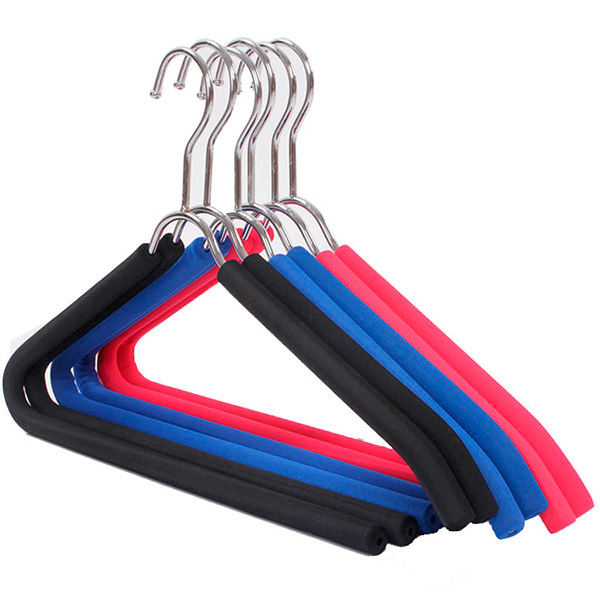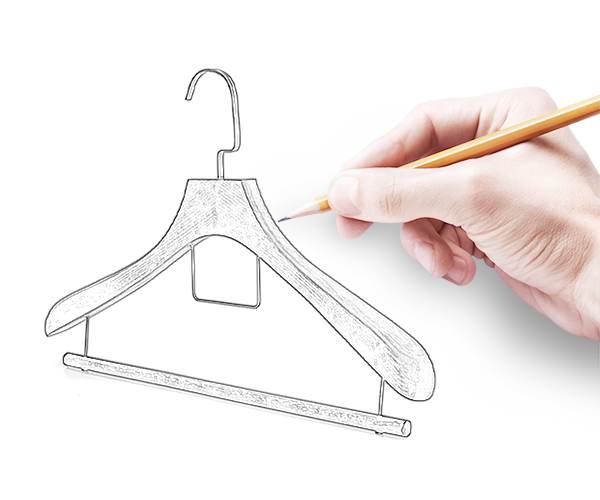
Some historians believe President Thomas Jefferson invented a forerunner of the wooden clothes hanger. However, today’s most-used hanger, the shoulder-shaped wire hanger, was inspired by a coat hook that was invented in 1869 by O. A. North of New Britain, Connecticut. An employee of the Timberlake Wire and Novelty Company, Albert J. Parkhouse of Jackson, Michigan has also been credited with the invention, as has Christopher Cann in 1876 as an engineering student at Boston University.
In 1906 Meyer May, a men’s clothier of Grand Rapids, Michigan, became the first retailer to display his wares on his wishbone-inspired hangers. You can see some of these original hangers at the Frank Lloyd Wright designed Meyer May House in Grand Rapids.
In 1932 Schuyler C. Hulett patented an improved design, which used cardboard tubes mounted on the upper and lower parts of the wire to prevent wrinkles, and in 1935 Elmer D. Rogers added a tube on the lower bar.
Hangers can be made in wood, wire, plastic, rarely from rubber substance and other materials. Some are padded with fine materials, such as satin, for expensive clothes, lingerie and fancy dresses. The soft, plush padding is intended to protect garments from shoulder dents that wire hangers may make. A caped hanger is an inexpensive wire clothing hanger covered in paper. Caped hangers are used by dry cleaners to protect garments after cleaning. Used wire hangers may be recycled, or returned to the dry cleaner.
Betterall has dedicated in hanger business for more than 20 years, combining the foreign style and Chinese characteristics, we offer many options for customers.
